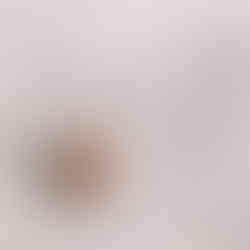Wind Earthbound
- Tricia Burton
- Jun 24, 2025
- 3 min read
Childhood Freedom Becomes Art: Exploring Place, Memory and Material Agency
What if understanding contemporary art practice plays hide and seek, not in academic theory but in the muddy adventures of a six-year-old, wandering the semi-industrial and wild fringes of North-east England? As a BA Creative Arts student currently working in assemblage and installation, the connection between 1980s childhood freedom and my current posthumanist practice reveals some fascinating insights about how we develop our relationship with the material world!
Imagine a small child wandering miles through a wild melee of nature and human-made structures, treating abandoned railway tunnels as playgrounds, and developing an intuitive sense of which places felt safe or dangerous. It wasn’t neglect then—it was a part of a typical childhood. At age six, I remember the whole town was my home—trees and human structures were my playground. This early relationship with found environments and improvised play spaces now directly informs my creative practice with fringe found objects.
This relationship manifests in works like Wind Earthbound—a recent piece I created during our BA Creative Arts ‘JUST DO IT!’ make and discussion session. Where I collaborated with wire already sculpted by wind from my fringe environment installation, anchored by a lichen-covered log left behind from forest management. The wind’s curls, twirls and bends became the primary creative force, while I simply responded to what was already there. As one insightful peer observed, these sculptures ‘symbolize the chaotic and often fraught relationship between industrial societies and the natural world’—exactly the kind of edge-land dialogue I navigated as a child.
The connection runs deeper than nostalgia. Growing up, navigating the edges where industrial heritage meets housing estates and rural landscape, I developed a strong connection to place that now drives my creative work. My attraction to broken, rusting materials make perfect sense when viewed through this lens. I learned early to see beauty in decay and authenticity in weathered surfaces. The weathered log in Wind Earthbound, marked by time and forest processes, carries the same appeal as those railway tunnels did decades ago.
Most intriguing is my theoretical focus on posthumanism and more specifically New Materialism with the idea that objects possess agency and can influence their environment. The thought of objects having agency is not a new concept to me. As a child, I spent hours creating complex narratives with Sylvanian Families toys, giving them voices. There was no divide between humans and nonhumans in my young mind—I was unknowingly practicing posthumanist thinking through imaginative play. Now, like in Wind Earthbound, I am still appreciating the agency of nonhuman forces. The wind became my collaborator, shaping the wire before I even touched it.
My sculpture work grounds me in ways that echo this childhood relationship. I spent my formative years climbing trees, exploring, and learning to read the moods of different environments. Working with found materials is a continuation of lifelong conversation with the material world. The gentle manipulation I describe in Wind Earthbound mirrors how I once worked with whatever the environment offered, adapting, responding and collaborating rather than controlling.
My work in fringe environments with weathered, discarded materials is a return to the liminal spaces where I learned to see possibility. Those edge-lands between industrial and rural, marginal spaces where nature reclaims human influence are both subject and settings for my work. The juxtaposition of just two materials in Wind Earthbound (wind-worked wire and forest-processed wood) reflects these same ideas of finding beauty, value and meaning at the edge of understanding.
The theoretical framework of New Materialism provides language for what I intuitively understood—that materials carry their own voices, that objects take part actively in creating meaning, that the weathered surface of found metal tells stories that pristine plastic cannot. My childhood gave me embodied knowledge of these concepts long before academic terminology.
What moments from your own childhood shaped your relationship with materials and space?
How did the level of freedom you experienced as a child influence your current creative practice or way of seeing the world?
What connections do you see between your own early experiences of place and freedom, and your current creative or life interests?
Thank you for reading, I hope this has been interesting!
If you want to share any thoughts and comments, please add comments below or say hello at: tricia531382@oca.ac.uk —I’m always happy to connect!











Comments